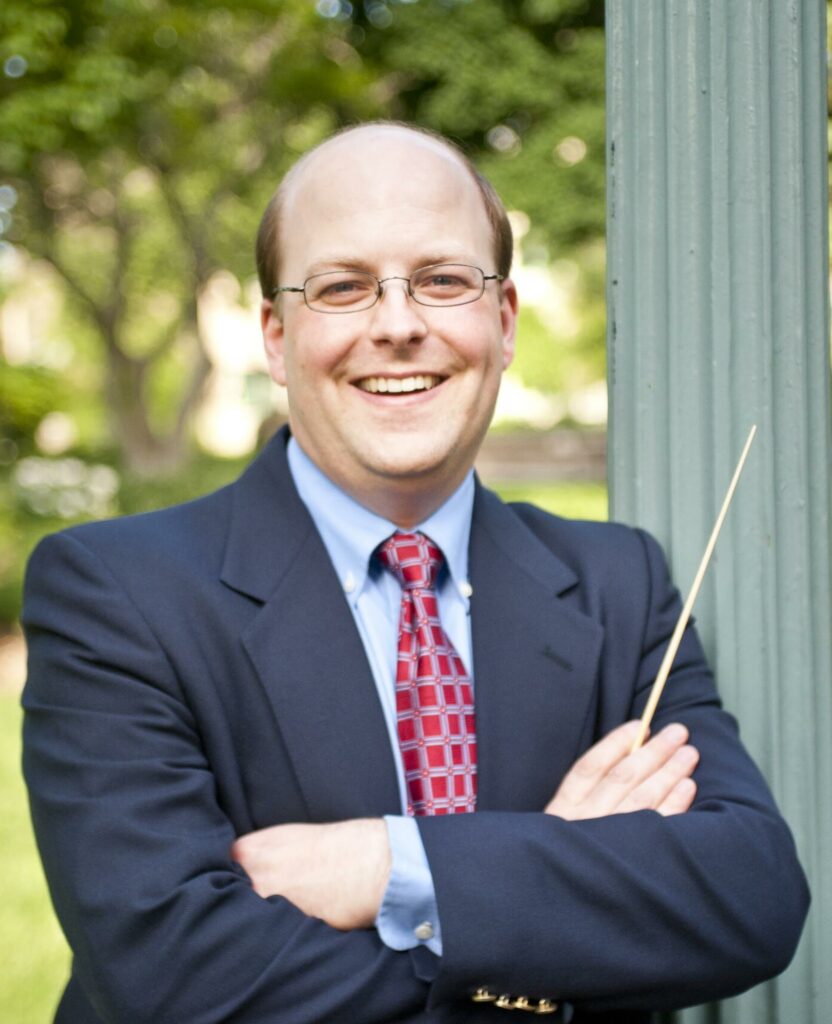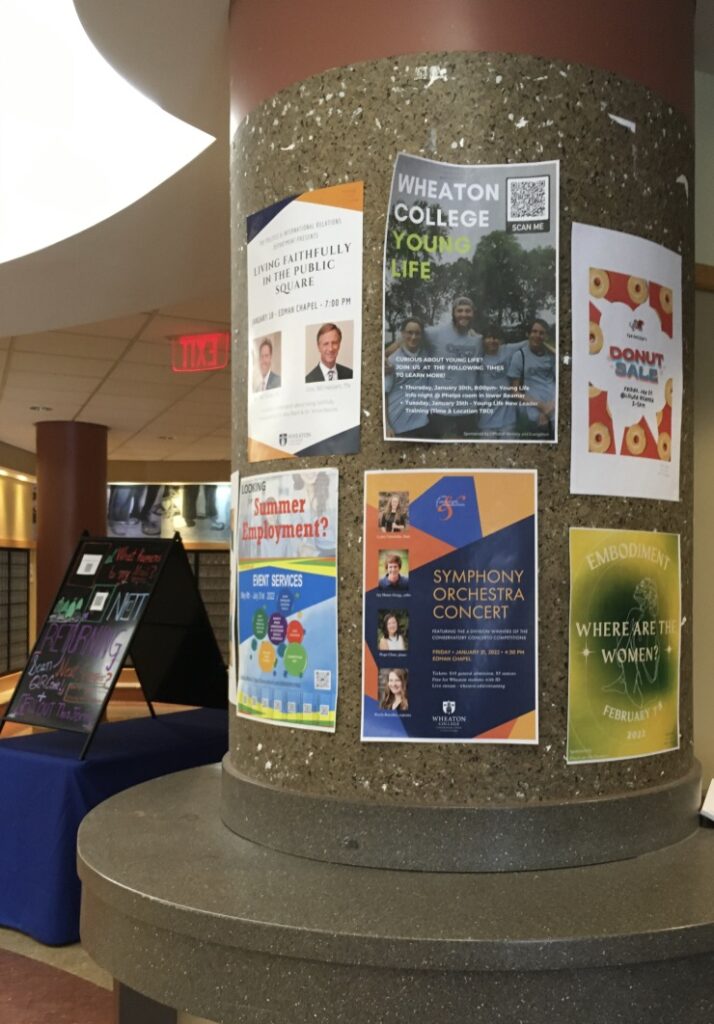How do I write about the music I hear at a concert?
Most undergraduate students will face this question at some point during their time at Wheaton, as Introduction to Music professors ask their students to submit written concert reviews.
Introduction to Music (MUCS101) serves as a general education requirement for students outside of the conservatory of music. Dr. John Rakes, who has been on the Music faculty since 2014, describes this course as “a chronological-historical approach toward an understanding of music” with a specific focus on “great musical works of the Western tradition.” Dr. Rakes also highlights the value of developing a “coherent, Christ centered, theology of the Arts.”

As part of this course, professors ask their classes to attend at least one concert during the quad. During these concerts, students must make detailed observations, as these descriptions form the basis of their concert review papers.
While attending a concert is an exciting event, many students may feel outside of their comfort zone when tasked with this type of writing assignment. Students will likely have questions such as…
What musical terms should I use to express the sounds I hear?
How do I best describe how the musicians appear on stage?
Some students may not even know where to start. They might have questions that include…
Where should I go to conduct my research?
How do I find concerts to attend?
Let’s address the last question first: How do I find concerts to attend?
One way to discover an upcoming concert is simply to walk around campus! As Publicity Manager of the Wheaton College Symphony Orchestra, I know that conservatory ensembles promote their performances by hanging posters all around campus. You can find plenty of concert options posted in the stairwells of Armerding or Lower Beamer.

Not all students are aware that the Conservatory of Music holds performances or “open recitals” every Thursday at 1:15pm that are open to all students. Open recitals last about 50 minutes and include performances by current music majors. If you are in class during this time however, no worries! There are plenty of other on campus concert opportunities.
Visit www.wheaton.edu/calendar-of-events to find a concert that interests you. Also, check out www.wheaton.edu/streaming to watch free live streams of music performances.
Where should I go to conduct my research?
After attending a concert, students should gather background info and conduct additional research before writing their reviews. The program notes section of a recital or concert booklet is a good place to start, as this section often includes composer biographies with dates and brief summaries of the compositions performed.
In addition, students should seek primary and secondary sources in order to write meaningful concert reviews. Physical copies of music resources including scores are located in the south half of Buswell’s lower level; here, you will find writings detailing the work of composers whose music you heard performed.
If a concert features composers of the late 20th and 21st centuries, you may have better results conducting online research. Buswell’s music librarian Keith Eiten recommends using the “Music Index” search tool under Research Databases – or in the case of a living composer, visiting their personal website to gather information about their music. In some instances, the bottom of a composer’s Wikipedia page will have links to reputable sources such as newspaper articles or video interviews.
What musical terms should I use to express the sounds I hear?
How do I best describe how the musicians appear on stage?
Now that you have conducted your research, it’s time to write your review. Some professors may request a concert review with two parts: a musical description and a personal analysis. According to Dr. Rakes, about half of the concert review should “describe what you experience, see, and hear.” The musical description portion should draw from your research of historical context and contain a discussion of musical elements present in the compositions.
Note that these directions do not ask for a personal opinion of the music! In casual conversation, college students are known to comment on music using phrases such as “it was good, I liked that song” or even “the vibes were chill,” but this informal language lacks the clarity and objectivity needed for writing an academic concert review.
Instead, musicians tend to analyze pieces based on four main components found in music:
- Melody & harmony → These are elements related to pitch; we identify pitch by the highness or lowness of a sound. The melody in a piece of music is the most prominent sequence of notes, which often repeats throughout the piece. Harmony, meanwhile, takes the form of chords that support the melody.
Ex: When listening to the first movement of Prokofiev’s Violin Concerto No. 1 in D Major, I could hear the violin soloist playing the melody in a higher register with the orchestra supporting the soloist, playing lower harmonies.
- Rhythm → Rhythm relates to the arrangement of musical sounds over a period of time. Composers usually organize rhythms into groups of beats that reflect a meter: a way of establishing pulse in music (you can tap your foot along to a steady pulse).
Ex: I sensed a regular pulse throughout much of the symphony’s fourth movement due to the steady offbeats in the horns.
- Texture → Texture describes the number of independent lines in a piece of music, which often correlates to the size of an ensemble. For instance, a symphony orchestra will have a thicker texture than a piano solo with a more thin sounding texture.
Ex: During the performance of Mozart’s Piano Sonata No. 16 in C Major, I noticed that the music had a mostly thin texture with only a few musical lines, a common trait of the classical period.
- Timbre → Pronounced “tam-ber,” timbre focuses on the sound quality of instruments in a piece of music. Some examples of timbre include balanced, bright, and dark sounds. Generally, higher pitched instruments (flute, glockenspiel) will have brighter timbres.
Ex: In Debussy’s La Mer, I observed that the most prominent melodies were given to the upper voices (violins, flutes, oboes, trumpets) of the orchestra, creating a brighter timbre.
With these concepts in mind combined with your research findings, you can provide a more detailed account of your concert experience. When listening to a piece, see if you can identify which instruments have the melody, whether the meter is steady or unclear, and what timbre or tone color certain instruments produce. Does a composer write repeated rhythms for the violas? Does the bassoon ever get the melody? Take note of features like these in the music and incorporate these thoughts into your concert review.
Finally, a concert review should recap observations seen from the audience’s perspective with regard to the musicians on stage. For example, some observations may include the uniformity of attire across members of an ensemble, a conductor’s varied gestures, the synchronized movements of a string section, or the facial expressions of a brass player. Do the musicians read from sheet music or do they have their music memorized? You can address how the musicians are positioned on the stage; perhaps seats are configured in a semicircle around the conductor or vocalists stand on several sets of risers. If a concert has an intermission, try sitting in a new location to get a different view of the stage.
Some concert reviews for Introduction to Music may also require a section demonstrating how the concert has made a personal impact: the analysis half of the review. Be sure to raise any questions you have about the performance in this section along with connections to other past experiences. Maybe the conductor shared a surprising story about the music or you have questions about the text from a vocal piece. At times, the style of one composer’s music may reflect that of another composer; for instance, Stravinsky’s 1924 piano sonata may remind you of a Bach invention. Think about how the pieces of music compare to your listening habits – what do the composers have in common with your favorite artists?
Music is a communal activity
Although not everyone has musical training or plays a musical instrument, the ability to engage with music is not restricted to a certain group of people. By reading, writing, and listening to music, we become participants in the activity of music. In fact, author and musicologist Christopher Small uses the term “musicking” and claims that music is a verb, not a noun. When we write about music, we are invited on stage, as writing empowers us to become part of the performance.
I encourage you to support Wheaton’s student musicians by attending recitals and concerts. We love sharing our music with you and we’re always delighted to have you join us!
Works Cited:
Small, Christopher. Musicking : the Meanings of Performing and Listening. Hanover: University Press of New England, 1998.